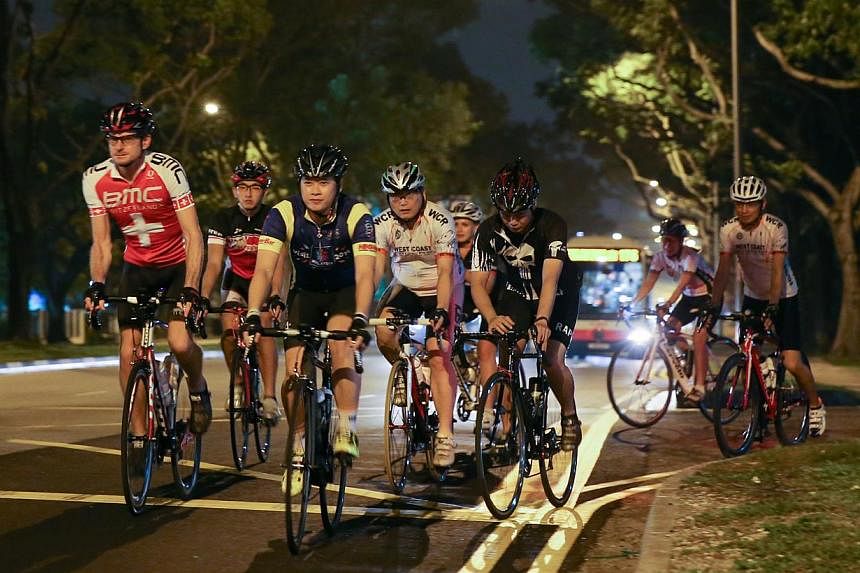Like most types of exercise, cycling can benefit your health.
In fact, it does not put as much stress on weight-bearing joints, such as the hips, as running does, said physiotherapist Joseph Wong from the Orchard Physiotherapy Centre.
That is why people who get injured from running are often asked to take up cycling to maintain their fitness while they recover, he said.
One should, however, consult a doctor before embarking on a rigorous cycling regimen.
Getting a doctor's go-ahead to exercise is particularly important for some groups of people.
People with vision-related ailments, such as cataract or eye degeneration from diabetes, should not cycle until these problems are addressed, said Associate Professor Goh Lee Gan, a senior consultant at National University Hospital's division of family medicine.
And those with poor heart function and poor asthma or diabetes control may pose a danger to themselves and others if they cycle without the green light from their doctors.
Drinking alcohol is a big no-no, too. Any intoxication, however mild, would pose risks to the cyclist and other road users, warned Prof Goh.
GO WITH A GROUP
Cycling is a closed kinetic chain exercise, like push-ups or squats, said Ms Irene Toh, principal physiotherapist at Singapore General Hospital. These exercises are performed where either the hands or feet do not move.
In cycling, the hands stay on the handlebars all the time. Yet the upper body muscles, such as that of the arm and chest as well as muscles which hold the shoulder blades to the thorax, are being exerted.
What powers the pedals are the major muscle groups in the legs and buttocks, such as the quadriceps, hamstrings, calves and glutes, she said.
Meanwhile, a cyclist's neck and back muscles keeps his spine in a forward leaning yet neutral posture.
People with health problems may want to consider cycling in a group, so that help is readily available should they feel unwell, suggested Dr Low Wye Mun, who heads the Sports Medicine Clinic at Pacific Healthcare Specialist Centre.
When cycling, they should also carry some form of identification with information about the medical conditions they have, he added.
In general, cyclists should increase the frequency, intensity and duration of their exercise sessions at a gradual pace, said Dr Ong Joo Haw, a registrar at the Sports Medicine Centre at Khoo Teck Puat Hospital.
Those who progress to more serious training should buy proper cycling equipment, be well-versed in road safety and go for bike fitting sessions, he added.

